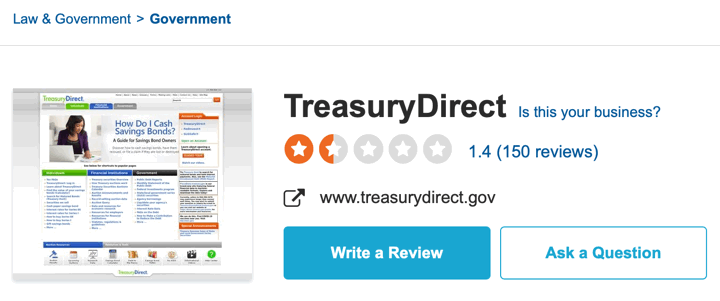Over the last few months, I’ve written articles about our efforts to optimize our dishwashing techniques and our laundry techniques to save both money and time.
Since these are routines that we do pretty much every day, figuring out how to do them just a little faster and a little cheaper ends up paying enormous dividends over time. Trimming just five minutes a day from our daily routine is nice, but when you can do the same with lots of different household routines, it ends up being huge. The same thing is true with shaving a quarter or two in expenses from those routines — it ends up being a lot of money over time.
Today, we’re going to look at our optimized meal planning and grocery shopping routines. This is something we’ve built up over the years with lots of little optimizations, trying out lots of things and discarding practices that didn’t work in terms of keeping costs and time investment as low as possible.
Identify the discount grocer in your area and shop there almost exclusively.
What you’re really looking for is the grocery store in your area that has almost everything you usually buy at the lowest overall price. Look at chains like Aldi, Winco, Fareway, Trader Joe’s, Lidl and grocery outlets.
Get used to shopping there. Almost every discount grocer has a few quirks that take some getting used to. They usually have fairly minimal staffing. They’ll often require self-bagging. Sometimes they’ll have narrow aisles and weird shelving.
The thing is, once you’re used to it, shopping there is just as fast as shopping anywhere else, except the total on the receipt at the end of the visit is usually much lower.
After that, the only reason you have to step into another grocery store is to get items that aren’t available at your main store, which won’t happen all that often.
Convenience foods are an exchange of money for time, and the exchange is often not all that great; you win in the long run by learning how to cook.
There are times when it really helps to have something in hand that’s super-convenient, but much of the time, when you buy convenience food, you’re exchanging money for time at a pretty poor rate.
The truth is that convenience foods offer significant time savings only for people who are novices in the kitchen. The more skilled you become at making your own meals, the less valuable convenience food appears to be.
Basically, all foods come down to a compromise between several factors: tastiness, time, cost and healthiness. Very few things excel at all of those things.
A pizza that you order from somewhere probably exceeds at tastiness and time, but it’s atrocious at cost.
A frozen pizza is better at cost at the expense of some tastiness — it’s OK at cost, OK at tastiness, and good at time.
A homemade pizza, on the other hand, is a winner at cost and tastiness, but bad at time.
Here’s the thing: the time factor becomes less of an issue as you cook more at home. It becomes increasingly easier to just make it yourself, so the time and effort difference between a homemade pizza and a frozen pizza become smaller and smaller (or you get more and more obsessed with making the perfect pizza, which means the tastiness gap gets wider and wider).
The message? Learn how to cook for yourself at home, even if it’s challenging at first. It’s going to suck down a lot of time and you’re going to feel frustrated, particularly at first. Just keep making things. Over time, you’ll start to build some skills in the kitchen. You’ll figure out easier ways of doing things. Gradually, that gap in effort and time between homemade foods and convenience foods will shrink down to very little, and at that point, the cost and quality of just making it yourself versus a “convenience” version (whether frozen: bad in quality — or delivery, bad in cost) nudges you towards just cooking at home except for very special occasions.
There are some convenience options that are really helpful shortcuts for ingredients, like canned diced tomatoes or frozen vegetables, but those are inexpensive options where you’re spending an extra quarter to save time chopping at a slight reduction in quality. Those are fine compromises.
Have a whiteboard in a central spot that’s near the kitchen.
On that whiteboard, keep a copy of your meal plan — what you intend to prepare and eat for meals for the week, see the next step — and have some free space for an ongoing grocery list.
On that grocery list space, just get in the habit of jotting down anything you need that you notice is running low. We use the lower portion of the board for this so that it’s easier for the kids to use. We jot down food items, household supplies and anything else that comes up that needs to be resupplied.
Keep a dry erase marker on the board. It’s good to have a little lip at the bottom where the marker can sit horizontally, which maximizes the lifespan of the dry erase markers. I’ve also seen plastic clips that serve the same function. Keep it stored horizontally, whatever you do, but make sure the marker stays near the board so it’s always super-convenient to add something to the list.
Placing the board near the kitchen makes it convenient to check the meal plan and to add incidental items to the list throughout the week.
Once a week, plan out your meals based on the grocery store flyer.
Grocery store flyers come out once a week, so that’s a great period on which to base your meal plans.
Start with that grocery flyer — I usually download it — and identify a few things in it that you’d like to use for meals in the coming week. I usually grab our family calendar as well so that I know if there are any significant events going on that would interfere with meal preparation so that I can plan accordingly.
What you’re looking for are sale items around which you can base meals during the coming week. I usually look at fresh produce items and meat items for this. What fresh items are on sale? Those provide the backbone of a lot of meals.
From there, I either tap my own memory or look online for meals. I find that Yummly is really good at finding simple recipes that utilize two or three specific ingredients, so I’ll type in two or three things from the flyer (or staples I know I’ll have) that seem to go well together and see what comes up.
I check the calendar and make sure that the time needed for that meal fits into the schedule for the week, and if it does, I put it on the meal plan.
Our meal plan is usually a table with three columns — breakfast, lunch, dinner — and seven or eight rows, one for each day. In each cell of that table, I try to have something. Breakfasts are usually very light and simple, and lunches are often just leftovers. It’s the dinners that get most of the focus in our house.
At this point, I’m usually starting a grocery list (see below) by adding the on-sale items I’m going to need to the list.
Next, I usually glance through the household supplies and the nonperishable items to see if any are on sale. If store-brand household supplies of a particular type that we often use are on sale, I’ll usually put them on my list immediately regardless of our current stock.
If it’s convenient, make a double or triple batch of the meal. You can simply freeze many meals quite easily, and you can use the extras for leftovers (more on leftovers in a bit). Making a triple batch of soup, for example, means leftover soup for lunch and a batch or two in the freezer.
If you get into that habit, many of your meal plan entries can come straight from the freezer, meaning that you don’t need to buy any groceries for them.
Also, if you start consistently doing this, sturdy, reusable freezer-safe containers are the way to go, both for convenience and cost. It takes several uses, but eventually the cost per use of sturdy freezer containers overtakes using freezer Ziploc bags and reusable containers are definitely more convenient. You can get started with this by using Ziploc bags, but gradually you’ll want to move to reusable freezer containers. These Rubbermaid FreezerBlox are a good place to start, and Anchor Hocking casseroles are great for larger casseroles. I find that the sturdier you get, the longer they’re going to last by far and the lower the cost per use becomes, plus you’re investing less time in dealing with them and replacing them.
Remember that a slow cooker is a valuable friend.
Let’s get this straight right off the bat — a slow cooker does not work well for everything. It works well for soups and certain kinds of casseroles and can work for things like whole chickens and roasts. It also works well for making things like stock or cooking dry beans.
If you have a slow cooker, lean into what it does well. If you have some recipes with beans in it, use the slow cooker to slowly cook the beans when you’re at work, meaning you can use dry beans for almost everything and save quite a bit of money. You can make a big batch of beans in it on Monday and use those beans for meals on Tuesday and on Thursday, for example.
You can even make some full meals in the slow cooker. Many soups work very well in the slow cooker, as they just simmer slowly all day long. Some casseroles work well, too. They make it convenient to assemble a casserole in the morning and have it in the midst of a busy evening.
The bad reputation that slow cookers sometimes get is that they produce mushy, tasteless food, and that’s usually the result of inadequate seasoning and choosing recipes ill-suited for the slow cooker. Lean into the things it does well and it will save you a ton of time in the kitchen.
We regularly plan on slow cooker meals on days where our evening schedule makes it difficult to find time to actually cook, and we also use it often when preparing things like beans and stock for later meals. It’s in constant use here, but that’s because we recognize the things it is good at and lean into them.
Keep this in mind as you meal plan. Can a slow cooker make something a little more convenient? Is there a meal this week that I can just make in the slow cooker because there’s little time for evening food prep? That should be an element in planning that meal.
Assemble a grocery list from the meal plan and the whiteboard list.
Once you have the meal plan ready and you’ve started a grocery list based on that meal plan, keep adding to the list by making sure you have the other ingredients for those meals as well as everything for the other meals you need to make.
I’ve tried lots of different methods for making a grocery list over the years and I’ve found that a simple piece of paper is still the most flexible and effective way to do it. I’ve had my phone die in the store before and I find that a lot of list-making tools are designed more for adding items as you go along rather than just making one list at one time. Thus, I usually just use pen and paper for my list. You may find that other methods work better for you, but I’ve tried a lot of list-making apps and have continually gone back to pen and paper in terms of efficiency and reliability.
What’s the point of the grocery list and all of this planning? The point is to make sure that once you’re actually in the store, you’ve got a list of items to buy that you can rely on and focus on. Your eyes are glued to the list and are just searching for items on your list, meaning it is far less likely that you’ll buy incidental things and there’s also no need to just meander the aisles. You’ll get out of the store much faster, too. I find that a good meal plan and grocery list recovers all of the time (and more) that you put into it when you’re actually in the store itself, plus it saves a ton of money by keeping your focus on what you actually need.
Buy everything in store brand form by default.
When you’re buying items and there’s a store brand option, buy the store brand option. This serves a number of purposes.
First of all, store brand items are often just as good as the name brand but less expensive. You’re usually getting something that will serve your purposes very well.
Second of all, by focusing on store brands, you’re actually saving time while shopping. There’s not a lot of comparison going on if you restrict yourself to just the store brand pasta, for example.
Third, if it turns out the store brand isn’t what you want, you can always use other brands.
Buying store brands unless there’s a good reason not to saves both money and time in the grocery store. It makes a lot of buying decisions much easier – nearly automatic, in fact – so that you spend less time there, plus your total at the checkout is a lot smaller.
Don’t bother with coupons.
Since we plan most of our meals using the grocery store flyer and stick with store brands, coupons rarely have any purpose at all. They usually just reduce the price of a name brand item down to roughly the price of a store brand item, which isn’t a big gain.
You can devote lots of time to couponing and save more than that, but the savings you get from hours of couponing effort is trivial compared to just sticking with a discount grocer, a meal plan, and a grocery list.
I use a coupon once in a great while, but only when it’s basically dropped in my lap. Otherwise, it’s just not worth the time.
Leave reusable bags in the car and take them into the store with you.
This is particularly true if you’re using a discount grocer, as it’s way more convenient (and sometimes cheaper) if you bring in your own reusable bags.
Basically, we have a cycle that our reusable bags go through. We keep a bunch stuffed into one bag in the back of our car. When someone goes grocery shopping, they grab that bag and put it in the cart while they shop. This makes bagging easier (if you’re self-bagging) and cheaper (if there’s any kind of bag charge) and usually more convenient when carrying full bags. At home, as we unload the bags, we stuff them all into one main bag again, then sit it by the door, which then gets taken back to the car when we’re done. (I also keep a couple in my backpack.)
This cycle saves us time over the long haul, particularly when carrying groceries into the house and when self-bagging at the store, and can save money as well if your store charges for bags.
Know your store’s layout.
One of the reasons that it’s very convenient to choose a discount grocer and use it as your main grocer is that it allows you to become very comfortable with the store’s layout, which means you can move through your grocery list incredibly quickly.
Over time, you’ll gain a strong sense of where you’ll find particular items, which means when you’re looking for the next item on your grocery list.
If you do this for long enough, you can start naturally organizing your grocery list by aisle, something that I now do with my own discount grocer. I simply know how things are grouped in the store and what’s more or less in each aisle and I list them accordingly on my grocery list. As I start making it, I leave large gaps between the groups that I fill in as I complete it, so all of the stuff at the top is in the produce area, the next part is in the first dry goods aisle, and so on.
Reaching that level of efficiency takes quite a bit of time. I didn’t sit down and memorize the grocery store layout, but gradually I came to recognize that all of the produce was always together, so I started clumping those items together on my grocery list. I recognized that the soups and canned tomatoes and salad dressings and dry beans were all close to each other, so I’d list those all together. I knew that pretty much all of the household supplies were in one area, so I wrote them down together. Gradually, I reached a point where I could do the whole list like this without even really thinking about it.
Have an organized pantry and cupboards and fridge and freezer; if it gets to the point of confusion, you’ll save time in the long run by reorganizing.
A disorganized kitchen means that literally everything you need when it’s time to cook a meal takes longer to find, and that simply adds to the resistance of cooking from home. It doesn’t add any time to putting groceries away if things are organized, either. It just saves time if you simply put things in a sensible place where you know where to retrieve them when you need them.
If you have too many items such that you can’t keep them organized, then you should downsize. Get rid of some of your kitchen tools and excess items so that you can easily find what you do have when you need it. If you have too many food items in the cupboard, stop adding to it and cook entirely based on what you have on hand until it’s manageable.
Then, make sure that you have a clear organization system for your kitchen cupboards and pantry and fridge and freezer. Put things in there such that they can easily be found, and if things are getting crowded, focus on using up a little of that stuff. Label items that aren’t clearly labeled, because if you don’t, you’ll likely never use them and that effort gets wasted – thus, labeling is actually a big time saver. (I like using masking tape and Sharpie.)
Having everything organized makes the process of actually cooking a meal much easier, too, since you know right where to go to find everything.
An efficient system of meal planning, from beginning to end, saves a ton of money and time.
The challenge is transitioning from the system you have now to a more organized system like this one. It takes time to make the switch in a lot of areas, so if you have time right now, take advantage of it. Start making all of your meals yourself. Clean out your pantry. Put up a board with a meal plan on it. Start making a grocery list. Start using your discount grocer.
Over time, all of these elements will make the process of putting food on the table for you and your family far faster and far cheaper than before.
Good luck.
The post Optimizing Meal Planning and Grocery Shopping appeared first on The Simple Dollar.
SOURCE: The Simple Dollar – Read entire story here.









